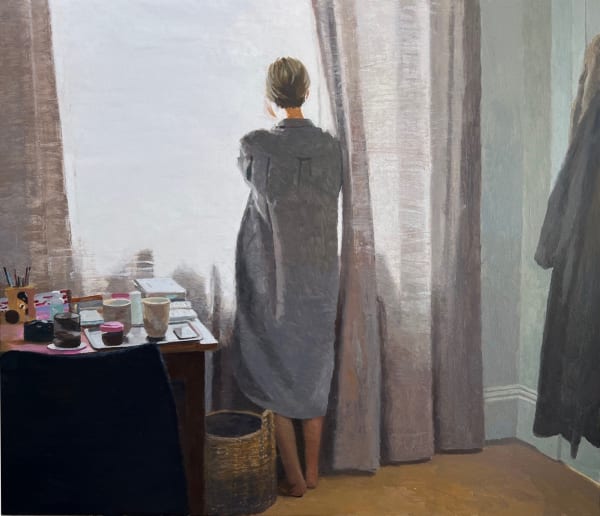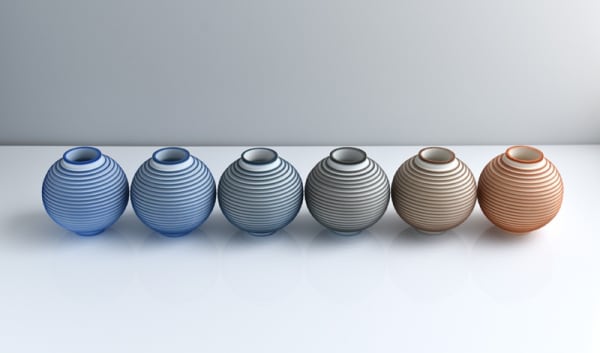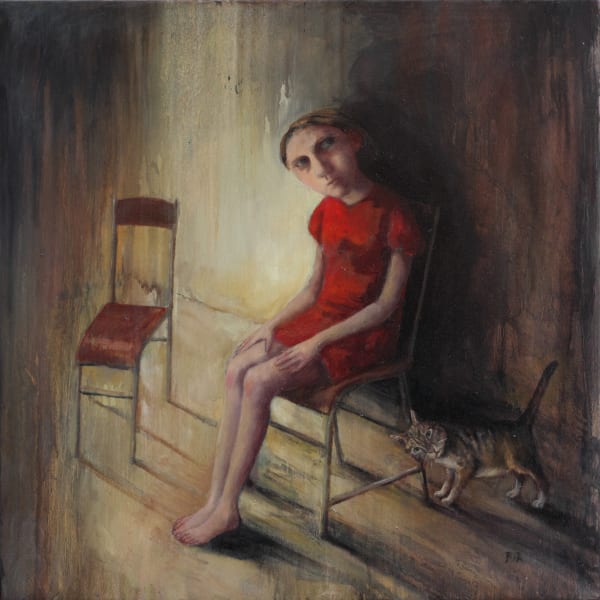Beth Carter
Jung talked about dream animals being frightening, or ‘minatory’; about how they would often appear to the subconscious engaging in strange behaviour or exaggerated in size. This he claimed was connected to how we deal with our raison d’être. Beth’s sculptures are akin to wandering in a Jungian dreamscape. The shadow waits, and the ghosts of strange beings beckon, frighten, beguile and terrify in equal measure. In these visions, we are not excluded but invited in.
Beth studied at Bath College and at Sunderland University. She won first prize in the Northern Graduate Show 1995 at the Royal College of Art. She then travelled to Sri Lanka and India to study mythological sculpture and later to New Zealand, Mexico, Gambia, Kenya and Tanzania to further explore the precedents for this genre of sculpture.
Beth currently has three large bronzes on show in Mougins in Southern France at invitation of the Musée d’Art Classique de Mougins, part of the 50th anniversary of Picasso’s death. Picasso spent the last twelve years of his life in Mougins, in his villa next to the exquisite, Notre Dame de Vie Chapel, until he died in April 1973. His house was named L’Antre du Minotaure (The Minotaur’s lair). Two of Beth’s giant bronze sculptures are now in the grounds of the Chapel, and a smaller scale Minotaur is inside surrounded by a collection of photos of Picasso taken by Lucien Clergue. The Musée d’Art classique de Mougins have also have purchased a small bronze minotaur sculpture for their collection. It is currently displayed in front of Picasso’s images of the ‘Dying Minotaur’. Beth’s work will also be shown at the Louvre-Lens in September of this year
‘Working within the realms of a sculptural tradition where the symbolic use of animal imagery is a potent and continuous source, my work creates allegories by, amongst other things, integrating the human form with animal forms. The resulting imagery holds both a timeless significance and a contemporary relevance despite and because of our separation from the natural world. It is important for me that my sculptures are accessible on an individual level as well as implicating more archetypal themes common to human experience.’
– The instincts are a far better protection than all the intellectual wisdom in the world. – C G Jung
Beth Carter’s world of sculpture and drawing features a cornucopia of dream-like, circus, or half man-half beast shape-shifters who, at their core embody the contrasts characterised in Robert Browning’s ‘dangerous edge of things’ – honest thieves, tenders murderers, superstitious atheists. A wolf appears to contemplate his kill pityingly, while a fox steals into the night with a pheasant, which on closer inspection he holds delicately, in human hands, the bird appearing potentially injured rather than ripe for the plucking.
Carl Jung talked about dream animals being frightening, or ‘minatory’; about how they would often appear to the subconscious engaging in strange behaviour or exaggerated in size. This he claimed was connected to how we deal with our instincts, our inner nature; about coping with our raison d’être. The human being it seems, reveals himself to be prone simultaneously to contradictory forces, accommodating the tendency to be both ‘goodie’ and ‘baddie’ in this chimeric hinterland.
Some of Beth’s sculptures, despite engendering intuitive, emotional or animal responses, take as their cue her own life experience. Particularly significant is the death in recent years of her artist father, a physically imposing, larger-than- life figure who was prone to depression. Looking at her minotaur creations, the largest of these is physically impressive, but with his head lowered he appears trapped in his own labyrinth, shorn of his power, rendered gentle. Another minotaur has his attention fixed in concentration on a moth cupped delicately in his hands. Beth describes how in a large chaotic family her father’s discovery of reading changed his life and helped him to be more contemplative.
In Man and Dog, though it is not the black dog of depression, the baleful figure’s closed eyes shrouded in gauze take on a pensive, inward demeanour. Like most of her standing figures, the stance is diffident, demur even. The dog is heavy, but the man’s head is bowed in acceptance of his fate as carrier, the little clown’s hat bringing a touch of pathos to the piece.
Figures which should carry threat are often disarmed by innocence. Standing Elephant depicts an adolescent boy’s lower body touching his pachyderm face self-consciously. Grinder’s Monkey seems less trickster and more a figure being comforted by his diminutive sidekick. Both monkey and elephant stand, as with Man and Dog, awkwardly, as if embarrassed by their very presence. The Frink-like Boxer has his head uncharacteristically raised (most figures look bashfully downward) though this seems only to emphasise that he may have taken a battering. His fighting days are surely numbered.
It is a notable irony that the smallest sculpture in the show wears a crown, and looks optimistically out towards the sunny uplands. The little guy is king. This is a typically oxymoronic trope, an elision of contrasting ideas that invites further consideration. Indeed the choice of animals is itself significant, the monkey and elephant with their highly developed intelligence calling to mind the gods Hanuman and Ganesh; or indeed the dogs, horses and bulls, which we can also in our global village spot as emissaries to the after-life, depicted on ancient walls from Lhasa or Luxor. The animist symbolism runs deep. These messengers, amid ill-fitting hats and masks and tassels, are somehow familiar to us, and part of the fun of considering their import is figuring out why. Or as Yeats put it, The world is full of magic things, patiently waiting for our senses to grow sharper.
Aidan Quinn
July 2015, Catalogue Essay
-
 Blind Fools Game£3,200.00
Blind Fools Game£3,200.00 -
 Fallen Minotaur£3,300.00
Fallen Minotaur£3,300.00 -
 King of Birds II
King of Birds II -
 Harlequin£6,200.00
Harlequin£6,200.00 -
 Tristan£3,300.00
Tristan£3,300.00 -
 Reading Minotaur VI£13,500.00
Reading Minotaur VI£13,500.00 -
 Jester Head£4,500.00
Jester Head£4,500.00 -
 Sitting Minotaur II£6,750.00
Sitting Minotaur II£6,750.00 -
 Showtime£5,000.00
Showtime£5,000.00 -
 Small King£2,800.00
Small King£2,800.00 -
 Sitting Dog£14,700.00
Sitting Dog£14,700.00 -
 Dog Mask Figure
Dog Mask Figure -
 The Crow£6,000.00
The Crow£6,000.00 -
 Boy with Unicorn£10,800.00
Boy with Unicorn£10,800.00 -
 Giant Standing Minotaur II£12,000.00
Giant Standing Minotaur II£12,000.00 -
 Solace
Solace -
 Faun £11,400.00
Faun £11,400.00 -
 Giant Standing Minotaur
Giant Standing Minotaur -
 Minotaur (Holding Horn)£12,200.00
Minotaur (Holding Horn)£12,200.00 -
 Antler Figure£16,800.00
Antler Figure£16,800.00 -
 Bacchus with Grapes£3,000.00
Bacchus with Grapes£3,000.00 -
 Crowmask II£3,900.00
Crowmask II£3,900.00 -
 Birdman £16,800.00
Birdman £16,800.00 -
 Boy Brave£3,800.00
Boy Brave£3,800.00 -
 Broken Carnival£10,800.00
Broken Carnival£10,800.00 -
 Clockwork Bear£2,300.00
Clockwork Bear£2,300.00 -
 Farewell Carousel£10,200.00
Farewell Carousel£10,200.00 -
 Fool£3,300.00
Fool£3,300.00 -
 Girl and Bull£9,000.00
Girl and Bull£9,000.00 -
 Fighting Clowns I£3,750.00
Fighting Clowns I£3,750.00 -
 Fighting Clowns I£3,750.00
Fighting Clowns I£3,750.00 -
 Fighting Clowns II£3,750.00
Fighting Clowns II£3,750.00 -
 Fighting Clowns II £3,750.00
Fighting Clowns II £3,750.00 -
 Fighting Clowns III£3,750.00
Fighting Clowns III£3,750.00 -
 Fighting Clowns III£3,750.00
Fighting Clowns III£3,750.00 -
 Giant Crouching Minotaur
Giant Crouching Minotaur -
 Girl in Boat£3,200.00
Girl in Boat£3,200.00 -
 Giant Minotaur Reading£12,800.00
Giant Minotaur Reading£12,800.00 -
 Horsechild£10,800.00
Horsechild£10,800.00 -
 Grinder's Monkey£6,000.00
Grinder's Monkey£6,000.00 -
 King Minos£5,700.00
King Minos£5,700.00 -
 King Minos ¾ Study£5,700.00
King Minos ¾ Study£5,700.00 -
 Large Minotaur Bust (with Bird)£9,900.00
Large Minotaur Bust (with Bird)£9,900.00 -
 Man and Dog£9,600.00
Man and Dog£9,600.00 -
 Messenger£4,000.00
Messenger£4,000.00 -
 Minotaur and Moth Study£4,200.00
Minotaur and Moth Study£4,200.00 -
 Monkey and Hare£18,000.00
Monkey and Hare£18,000.00 -
 Starman£4,500.00
Starman£4,500.00 -
 Pegasus£8,400.00
Pegasus£8,400.00 -
 Seated Bacchus with Vines£4,200.00
Seated Bacchus with Vines£4,200.00 -
 Standing Minotaur I£16,500.00
Standing Minotaur I£16,500.00 -
 Sleeping Minotaur ¾ Study£3,600.00
Sleeping Minotaur ¾ Study£3,600.00 -
 Small Standing Donkey£2,250.00
Small Standing Donkey£2,250.00 -
 The Dunce£5,300.00
The Dunce£5,300.00 -
 Standing Minotaur II£9,000.00
Standing Minotaur II£9,000.00 -
 Standing Minotaur ¾ Study£5,400.00
Standing Minotaur ¾ Study£5,400.00 -
 The Innocents£7,950.00
The Innocents£7,950.00 -
 The Secret Keeper£2,400.00
The Secret Keeper£2,400.00 -
 Theseus with Candle£5,900.00
Theseus with Candle£5,900.00 -
 Winged Clown£4,500.00
Winged Clown£4,500.00
Beth studied at Bath College and at Sunderland University. She won first prize in the Northern Graduate Show 1995 at the Royal College of Art. She then travelled to Sri Lanka and India to study mythological sculpture and later to New Zealand, Mexico, Gambia, Kenya and Tanzania to further explore the precedents for this genre of sculpture.
Beth currently has three large bronzes on show in Mougins in Southern France at invitation of the Musée d’Art Classique de Mougins, part of the 50th anniversary of Picasso’s death. Picasso spent the last twelve years of his life in Mougins, in his villa next to the exquisite, Notre Dame de Vie Chapel, until he died in April 1973. His house was named L’Antre du Minotaure (The Minotaur’s lair). Two of Beth’s giant bronze sculptures are now in the grounds of the Chapel, and a smaller scale Minotaur is inside surrounded by a collection of photos of Picasso taken by Lucien Clergue. The Musée d’Art classique de Mougins have also have purchased a small bronze minotaur sculpture for their collection. It is currently displayed in front of Picasso’s images of the ‘Dying Minotaur’. Beth’s work will also be shown at the Louvre-Lens in September of this year
‘Working within the realms of a sculptural tradition where the symbolic use of animal imagery is a potent and continuous source, my work creates allegories by, amongst other things, integrating the human form with animal forms. The resulting imagery holds both a timeless significance and a contemporary relevance despite and because of our separation from the natural world. It is important for me that my sculptures are accessible on an individual level as well as implicating more archetypal themes common to human experience.’
-

Summer Exhibition
Selected Artists 16 Jun - 30 Aug 2025SUMMER Show 2025 New Work by Jo Barrett, Alex Callaway, Beth Carter, Andrew Crocker, Linda Felcey, Atsuko Fujii, Mark Entwisle, Amelia Humber, Nicholas Lees, Christopher Marvell, Alice McMurrough, Jenny Pockley,...Read more -

Nicholas Lees
New Ceramic Sculptures 16 Jun - 30 Aug 2025Read more -

Beth Carter
New Sculptures 1 - 29 Mar 2025Read more -

London Art Fair 2025
Selected Artists 21 - 26 Jan 2025Read more -

Winter Exhibition
6 Jan - 17 Feb 2024Read more
EDUCATION
1992-1995 BA (Hons) Fine Art. Sunderland University, UK
1993-1994 Placement at the Cyprus College of Art, Cyprus
1990-1991 Art Foundation, Bath College of further Education, UK
AWARDS AND TRAVEL
2016 National Open Art Prize, South West Winner
2007-09 Travelled to Gambia, Kenya and Tanzania
2006 Two month Residency at Bronze Casting Foundry, in Guadalajara, Mexico
2004 Olympia Artfair, London (Individual Artist Award)
2002 Travelled and Worked in New Zealand (Womad: World of Music and Dance)
2000 South West Arts, UK, Individual Artist Award to produce new body of work
1997 Travel in Sri Lanka and India to study devotional/mythological sculpture
1996 Northern Arts, UK, Travel Award to Crete
1996 South West Arts, UK, Travel assistance grant
1995 Northern Graduates Show, The Royal College of Art, London (Awarded 1st Prize)
ART FAIRS
2023
London Art Fair, Beaux Arts Bath
2022
London Art Fair, Beaux Arts Bath
2021
London Art Fair, Beaux Arts Bath
2020
London Art Fair, Beaux Arts Bath
2019
AAF Spring, Battersea, Beaux Arts Bath
London Art Fair Islington, Beaux Arts Bath
Affordable Art Fair Brussels, LKFF, Brussels
2018
London Art Fair Islington, Beaux Arts Bath
2016
LAPADA, London, Beaux Arts Bath
AAF Battersea, Beaux Arts Bath
London Art Fair, Beaux Arts Bath
2015
Beirut Art Fair
Affordable Art Fair Hong Kong
2014
Art Palm Beach
2013
London Art Fair
2012
London Art Fair
Bloomsbury Art Fair
SELECTED EXHIBITIONS
2023
Winter Exhibition, Beaux Arts Bath
2022
Summer Exhibition, Royal Academy of Art, London
M Fine Arts Galerie, Boston, Massachusetts
‘Labyrinthine’, James Freeman Gallery, London
2021
Hugo Galerie, New York
Solo exhibition, Beaux Arts Bath
2020
‘Beasts’, Arusha Gallery, Edinburgh
Spring Selections, M Fine Arts Galerie, Boston, Massachusetts
‘Art in Doom’, Jonathan Ferrara Gallery, New Orleans
Winter Collective II, Hugo Galerie, New York
‘Art We Love’, Winter Group Show, M Fine Arts Galerie, Boston
‘There is no dark until something shines’ Solo Show, Hugo Galerie, New York
2019
‘The Summer Exhibition’, Beaux Arts Bath
Winter Collective I and II : M Fine Arts Galerie, Boston
Summer Collective I and II, Hugo Galerie, New York
SOFA Sculpture Projects Functional Art and Design, Hugo Galerie, Chicago
Back to the Drawing Board, Roger Billcliffe Gallery, Glasgow
2018
Mixed Summer Exhibition, Beaux Arts Bath
Shadow Stories, Solo Show, LKFF Brussels
Sawdust and Sequins: The Art of the Circus, Royal West of England Academy, Bristol
Magical Realism, Hugo Galerie, New York
Mythos, Charlie Smith London
2017
Solo Exhibition, Beaux Arts Bath
Spike Island Open Studios, Bristol
Artists of Fame and Promise, Mixed Summer Show, Beaux Arts Bath
‘Night Tide’, Arusha Gallery, Edinburgh
Summer Collective I and II, Hugo Galerie, New York
2016
NOA Competition, South West Prize Winner, Mercer’s Hall London
Chchoter Å Travers La Rivière, Hugo Galerie, Philadelphia
Winter Fête Group Show, Georges Bergès Gallery, New York
2015
Winter Collective Part I, Bertrand Delacroix Gallery, New York
The Shining Guest, View Art Gallery, Bristol
‘ODYSSEY’, The Chapel of The House of St Barnabas, bo.lee Gallery, London
Group Exhibition, Beaux Arts Bath
Minotaur on Box sculpture on display, Musée d’Art Classique de Mougins, France
Dessins du Sculpteaurs, Galerie Rauchfield, Paris
2014
‘A Christmas Cabinet’, bo.lee Gallery, The Hepsibah Gallery, London
Winter Collective Part I, Bertrand Delacroix Gallery, New York
Summer Group Show, Axelle Fine Arts, New York
‘Dancing with Morpheous’, Bertrand Delacroix Gallery, New York
2013
‘A Beautiful Death’, View Art Gallery, Bristol
‘Lucid’, bo.lee Gallery, London
2012
‘Unnatural-Natural History’, Royal West of England Academy
‘Shadowside,’ Blackall Studios, London
‘True Identity’, View Art Gallery, Bristol
Axelle Fine Arts, Boston
Bertrand Delacroix Gallery, New York
‘Nocturnes: Romancing the Night’, The National Arts Club, New York
2011
‘Here and Now’, View Art Gallery, Bristol
‘Darkness to Light’, The Octagon Chapel, Bath
2010
Art of Giving, Group Show and Charity Auction, Saatchi Gallery, London
Solo Show, Black Swan Arts, Frome
Group Show, Mauger Modern Gallery, Bath/London
2009
Chichester National, (Selected National Art Competition)
Christmas Show, View Art Gallery, Bristol
2008
National Open Exhibition, Royal West of England Academy, Bristol
Two person show, Badcocks Gallery, Newlyn, Cornwall
Works on Paper Group Show, The Royal Academy, London
2006
Beauty and the Beast, Stourhead Gardens, National Trust / Arts Council England
Solo Show, Queens Street Gallery, Emsworth
2005
Solo Show, Badcocks Gallery, Newlyn Cornwall
2004
Olympia Artfair, London (Individual Artist Award)
2000
148th Selected Open Autumn Exhibition, Royal West of England Academy, Bristol
1999
Spike Island Launch Exhibition, Bristol
1997
Fabulous Beasts, Group Show, Hampshire Sculpture Trust, Hampshire
1995
Northern Graduate Sho


































































